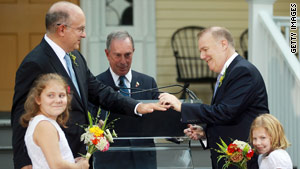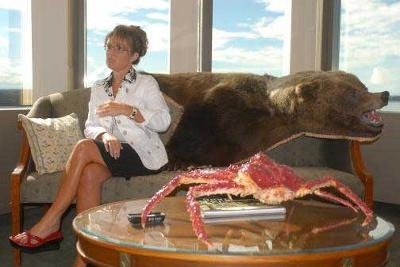Now that DADT is finally under serious review, it is once again appropriate to consider how other military regimens deal or have dealt with with their queer members – or aspirant members.
As I have noted before, across the EU this is simply not a question at issue. Gay men and lesbians serve routinely, just as any other servicemen and women. Here in the UK, every July some members routinely join the annual “London Pride” through the streets of London, either in uniform, in military squads, or as individuals in other groups of specific (non- military) interest. In South Africa, the constitution’s non-discrimination clause guarantees that sexual minorities should be able to serve on the same basis as anyone else. Last month, I was intrigued by this report from Peter Toscano, telling of a South African soldier who faced a gender identity issue by transitioning – and the military authorities provided a female officer as mentor and support to help her through the process.
In European history, gay soldiers were prominent in the Greek armies: notably in the
Sacred Band of Thebes and its pairs of lovers (where only gay lovers were admitted), but also in other Greek fighting forces, where they were often crucial in creating or defending democracy.
Today, I want to discuss another renowned military culture with a strong homoerotic tradition – the Japanese shoguns and samurai.
[

Samurai and Shoguns
For centuries, love and sex between men have been recorded and celebrated at the highest levels of Japanese society, including several emperors, and have especially associated with the military establishment and with the monasteries.
Back in the 12th century, the Japanese Emperor Go- Shirakawa (1156 – 1158), who was a devout Buddhist, fell in love with Fujiwara Nobuori. Then, in 1192,a later emperor Go-Shu named Minamoto Yoritomo as his military commander – i.e. “shogun”, who came to act in the name of the emperor. Yoritomo took as a lover a young officer, Yoshino.
Many succeeding shoguns followed this example, taking as lovers apprentice warriors known as “wakashu”, giving rise to the name for this type of relationship: “wakashudo”. The name given to the younger warrior lovers in these relationships were known as “gomotsu”:
“most of those who storm the battlefield, warding off the enemy and accompanying their lords to the end, are the lords’ male sex-partners.” (p 421)
“As in ancient Greece, Japanese culture idealised shudo as a source of morality and military courage.”
“In our empire of Japan, this way flourished from the time of the great Master Kobo particularly. And in the abbeys of Kyoto and Kamakura, and in the world of the nobles and the warriors, lovers would swear perfect and eternal love …..whether their partners were noble or common, rich or poor, was absolutely of no importance.
During the Ashikaga shogunate, (1338 – 2573), 6 shoguns out of 15 are known to have had wakashu lovers. Add in the succeeding
Tokugawa shoguns (1573 - 1837), “at least half” of all shoguns had male love affairs.
eg. Yoshimochi, the fourth Ashikaga shogun (1395 -1428) loved a young samurai Akamatsu Mochisada, to whom he granted three provinces, simply for homosexual favour.
Yoshinori (1429 –1441 ) was a Buddhist monk from age 10 until he became shogun at 35. He invited temple entertainers to share his bed, and planned to bestow three provinces on a young man who tad taken his fancy – but this led to his death.





















.jpg)

